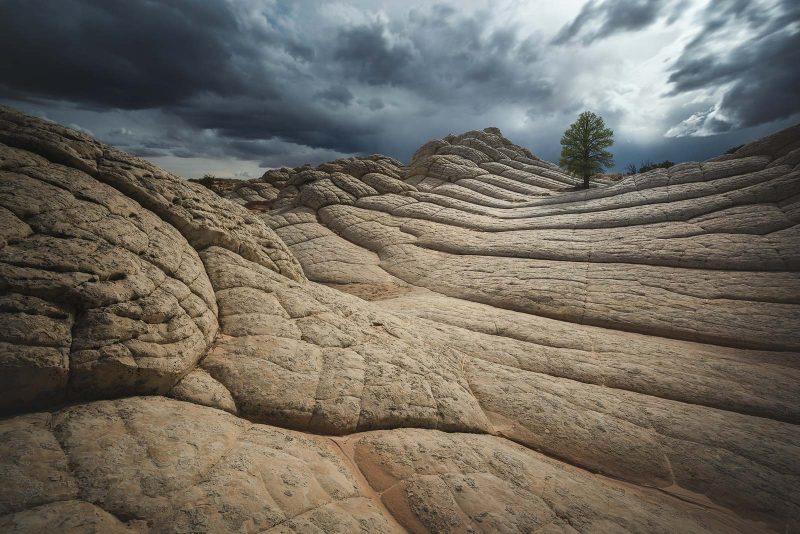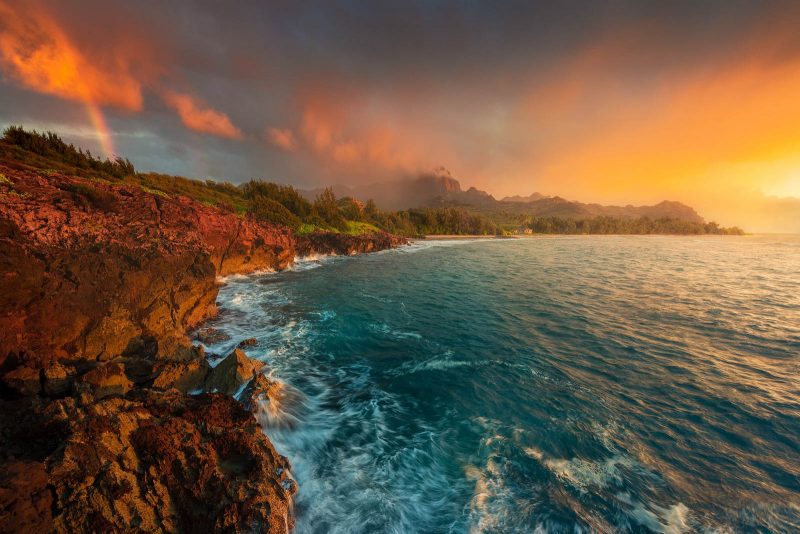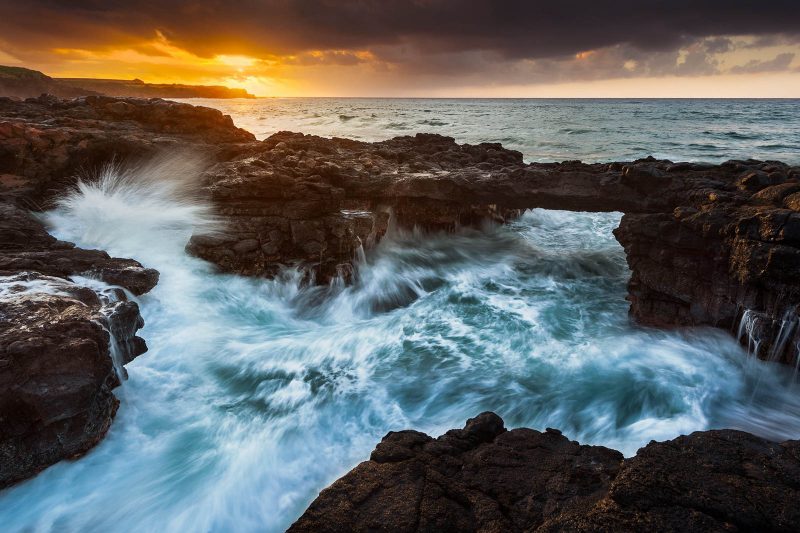How to Find Great Locations for Landscape Photography

None of us can deny that the world is a big place, full of stunning landscapes and dazzling night skies. But finding the perfect frame involves a bit more than just luck. It is easy to hop on social media these days and find beautiful locations to shoot, but there’s something extremely fun about being a bit of a landscape photography detective.


Now don’t get me wrong, we will touch on the power of social media in regard to location scouting, but there are so many other tools out there that can be utilised to score the perfect scene.
In this article, we will look at what it takes to scout a location from home, plan for light, and on-location scouting. These are just the tools that I personally use, and other photographers may have different workflows, so use these as guidelines and don’t be afraid to add in your own tools!
Sources to find landscape photography locations
There are a handful of various tools available to help you plan for your next landscape photography adventure. From mapping software and sources for satellite imagery, to eBooks, Instagram, and YouTube videos – you have an endless supply of knowledge at your fingertips.
So where do you start? My goal in recent years has been to shift my photography into areas that are lesser known, and lesser photographed.
Sure, the fantastic locations like Horseshoe Bend, Tunnel View in Yosemite, and Havasu Falls are stunning and worthy of a frame, but you’ll be battling other tripods there, and all will end up with the same frame.
Yes, I’ve shot, and will continue to shoot, popular locations – but I make it a goal each year to photograph some places that make my audience say, “Wow, where is that?”
1. Google Earth
For me, I personally like to start my research by just nerding out on Google Earth. I’ll typically have an idea of the kind of scene I am wanting to capture based on the current season.
If it’s winter, I tend to either focus on areas where there will be snowfall, or possibly the southwest where cooler temperatures allow for a more comfortable shooting experience. I will also have in mind what the moon phase is going to be doing and whether I plan on capturing night sky imagery.
Google Earth allows for the ability to zoom in via satellite to a pretty darn close proximity to a location with good resolution. As I scour the landscape, I look for areas of interesting textures, colors and geological features (think windy rivers or streams, canyons, etc.).
If I find an area of interest, I mark the location and then start to calculate if it’s even feasible to reach the location. Is there a road out there? If so, is it paved, dirt, sand? Does it look like I’ll need high clearance? How close will the road take me to this area I’m interested in and then how far of a hike? What’s the hiking terrain look like?
These are just a few of the questions that bounce around in my head after finding somewhere of interest.
Quick tip: if you right click, you can then measure the distance between two points to get an idea of how much hiking or driving you may be in for. Also, if you aren’t familiar with the infamous “Pegman”, you should get to know him… or her?
Pegman is the little yellow figurine that you can drag and drop in certain locations to reveal the street view of that area. This gives you a real image from that area as long as a Google Street View Car has been there, or someone has uploaded an geotagged image. You can also drop a pin and get the precise GPS coordinates to your location of interest to plug into your hiking GPS.
2. Instagram
Instagram can be another powerful resource to help scout and find locations to shoot at. It does have its shortcomings, though, that we will touch on in a minute.
When I use Instagram to help find a great location, I rely on hashtags and the “places” search option. For hashtags, I’ll search fairly broad words. For example, cliffs, Arizona, mountains, river, etc. For places, it’s the same thing, just searching for a city in the area near where I may be interested in visiting.
Instagram doesn’t really help me too much overall, but it can help to find some gems every now and then. If I do find a scene that I like, I will reach out to the account that posted it and see if they are willing to help give some details on the location.
Now for the bad part about Instagram. Simply put, the images aren’t held to any ethical standards, and transparency is often minimal amongst photographers. This means that you can easily be duped into visiting a location that does not look anything like the scene in which was posted.
The growing trend over the past few years has been to warp mountains bigger than what they are, combine locations to create one, and even cloning out cities and buildings. So, just be prepared that you may be a little mislead if you base your trip just from a photo. That’s why I suggest trying to reach out to the person who captured the image to find out if it’s been heavily manipulated.
3. Locals
If you have the ability to reach out to the locals that live in or near the area you are wanting to explore, take advantage of their knowledge. The people who live in the area know it best and have often been so helpful for me to be able to safely shoot a spot. They help me to learn what is the best time of year, or even point me in the direction of a better location to shoot that I may have never known about.
I’ve chatted with locals in person, email, and by just calling them. Now, I’m not talking about pulling out the good ol’ white pages and start calling random strangers. I tend to reach out to visitor centres, outdoor adventure shops, or even some of the hotels.
Tools to plan for light & weather
Now once you’ve secured your epic shooting location, it’s time to hone in on when you want to photograph it. You may realise, when planning for the light, that your location needs to be visited in a different time of year for the best light. Photography is defined as the capture of light, so it only makes sense to give your frame the best light available.
There are a few things I keep in mind for when I’m planning for light. The first is what direction will I be shooting in, and does that line up with a sunrise or sunset outing?
Second is the angle of elevation of the sun. If I’m wanting to capture a scene with a sunburst peaking over the mountains, I’m going to have to wait a bit of time after sunrise for that to happen. So the question is, how long?
Read more: How to Create Sun Stars in Landscapes and Avoid Lens Flare
Finally, I need to consider what the weather for my shoot day will be. Obviously, cloud cover plays a huge role in what kind of light your scene will be decorated in. Cloudy days provide a nice soft light, while blue skies will result in pretty harsh light a bit after sunrise or up until sunset.
Rainy days can bring incredible drama and mood, but can also hide your landscape if it’s going to be a heavy, continuous rain. So as excited as you may be to quickly run out to your spot, you need to take a few minutes to plan first if it’s worth the effort.
1. The Photographer’s Ephemeris & Photo Pills
To execute your planning for the kind of light you may have in your location, I recommend utilising either The Photographer’s Ephemeris or Photo Pills.
Both of these apps are incredibly powerful for planning. They can show you the direction where the sun or moon will rise and set, and how that object will move through the sky throughout the day. This includes the location and elevation.
Both apps also offer augmented reality so, if you are out scouting prior to your shoot time, you can simply hold the app up and it will overlay the sky onto the scene for you through your camera. You can then move through time to see what will happen within the coming hours, days, or weeks.
These are both absolutely the best planning apps out there in my opinion. They both do have a bit of a learning curve though, so make sure you practise with them prior to your planning / trip. Photo Pills also goes into a bit more detail and you can calculate extreme measures like shadow lengths, depth of field calculations and more.
2. Weather, cloud cover, satellite imagery
I mentioned earlier that cloud cover and weather are the two biggest factors into how your light may be affected. Now, as much as you may try to shake your fist at the sky and change it, the weather is the one thing that we cannot control. But we can try to plan for it.
There are a couple of tools that I use the day or two prior to going to my location. The first is the obvious: the weather forecast. I keep a keen eye on it to see if any storm systems may be coming in to bring rain, snow or clouds.
I try my best to avoid going to shoot on clear sky days as clouds are a landscape photographer’s friend. If I’m heading out for a sunset shoot, a few hours prior to sunset I check the visible satellite loop for that area. This is simply done by doing a Google search for “visible satellite loop (location).”
This satellite allows for you to see what cloud cover is in your location and, when you loop it, you can see where and how the clouds are moving. This helps plan for any subtle adjustments you may have to do for your location. Now the key word here is “visible”.
This satellite can only see clouds during daylight hours, so if you’re headed out for sunrise or a night sky shoot, it’s just going to show black and give you no data. There is a bit of a saving grace though, and that is the water vapour satellite imagery.
Clouds are made of water molecules, so you can use this satellite to see what kind of moisture is in the air at your location. The more moisture, the higher probabilities that there may be some cloud cover.
Fine-tuning your shoot on-location
Okay, here we are! You’ve done your research and found a beautiful location to shoot. The weather is cooperating, and it looks like you’re going to have some fantastic light! Now it’s time to condense down that incredible scene to a perfect frame.
You didn’t put in all that work to just get to your location and immediately set up your tripod and start clicking away, so spend some time scouting the area and looking for key ingredients to your frame.
1. Foreground
Personally, I feel that one of the most important elements of a landscape image is the foreground. Foreground can be utilised in many different ways. From creating flow in the manner of leading lines or repeating patterns, to adding a mood to a scene, creating color contrast, scale, energy and more.
But, foreground is not just anything. It needs to serve a purpose and have intent. So make sure you scout your area looking for foreground that is going to benefit your frame, not take away from it. One negative element in your frame can really hurt your entire composition.
Read more: Landscape Composition – Using Foreground to Create Depth
2. Small details
As I just mentioned, one negative element can do quite a bit of damage to the best of scenes, so it is key to pay attention to the small details. These are things that may protrude in or out of your frame, bright or dark objects that feel out of place, other photographers (unless used for scale or a human element), and more.
If you feel you have a great composition, check again. Sometimes moving just six inches one direction or another can completely change your frame and help strengthen it.
3. Backup plan
The light, colour, and foreground may not always be in the spot that you want it to be when it’s time to shoot your location. Therefore, I recommend having a Plan A and B.
What I mean by that is to have your Plan A be your “money shot.” This is the composition and location that if all the conditions come together perfectly – that’s the frame you want to walk away with. But what happens if those beautifully sunset lit clouds hang out in a different direction? Well, that’s when Plan B comes into play.
This is your shot that if the colour and/or texture is in an unworkable direction from Plan A, you have this shot to fall back on. Now this involves getting to your location early, scouting around, and using the planning tools we discussed in this article. It takes some work, but has saved my skin more times than I can count when conditions rapidly change.
In conclusion
Finding a great location for landscape photography can be quite the fun puzzle, and also quite frustrating at times. It’s imperative to be patient and to remember that, no matter what, you are getting to explore this awesome world we live in.
Sometimes you may come across an incredible landscape and the conditions don’t work out, but don’t let that deter you. Come back and try again when you can. Sometimes the work you put in, including the failures, makes that beautiful gallery worthy shot even more rewarding when you do capture it!
Take a look at some of our location guides for inspiration, and expand further afield with the methods we’ve discussed.
Canada location guides:
- 10 Best Landscape Photography Locations in the Canadian Rockies
- Where to Photograph Landscapes in Banff National Park, Canada
USA location guides:
- Where to Photograph Landscapes in the USA
- Top 5 Locations for Nature Photography in Alaska
- Where to Photograph Landscapes in Acadia National Park, USA
- Top 10 Landscape Photography Locations in California
UK location guides:















